Researchers at Berkeley Lab’s 88-Inch Cyclotron successfully made superheavy element 116 using a beam of titanium-50. That milestone sets the team up to attempt making the heaviest element yet: 120.
Tag: Neutrons
Supercool Delivery: Final Section of Souped-Up Neutron Source Trucks Out of Jefferson Lab
As a longtime partner of Oak Ridge National Laboratory, Jefferson Lab has been supplying sections of particle accelerator called cryomodules – the supercooled behemoths that propel particles to near the speed of light for scientific research – for the Proton Power Upgrade (PPU) of the Spallation Neutron Source.
Teasing Strange Matter from Ordinary
Like protons and neutrons, Lambda particles consist of three quarks bound together by gluons. But unlike protons and neutrons, which contain a mixture of up and down quarks, Lambdas also contain a strange quark.
Nondestructive Material Analysis: CSNS Back-n’s Neutron Tech Unveiled
Neutrons, known for their ability to penetrate materials deeply, are key in nondestructive material analysis. Techniques like Neutron Resonance Analysis (NRA) and its variant, Neutron Resonance Transmission Analysis (NRTA), use these properties to identify elements and isotopes inside materials without damaging them.
Neutrons prove ‘Bond villain’ did not cause Arecibo telescope collapse
After appearing in the Bond film, “GoldenEye,” the Arecibo Observatory was the world’s largest radio telescope until December 2020, when its cable wires slipped causing the platform to collapse. Neutron imaging on failed cable sockets was performed at Oak Ridge National Laboratory.

Neutrons look inside working solid-state battery to discover its key to success
Researchers used neutrons to peer inside a working solid-state battery and discovered that its excellent performance results from an extremely thin layer, across which charged lithium atoms quickly flow as they move from anode to cathode and blend into a solid electrolyte.
Squeezing data from a diamond sandwich
For decades, scientists sought a way to apply the outstanding analytical capabilities of neutrons to materials under pressures approaching those surrounding the Earth’s core. These extreme pressures can rearrange a material’s atoms, potentially resulting in interesting new properties.
Understanding the Origin of Matter with the CUORE Experiment
Neutrinos are involved in a process named beta decay that involves a neutron converting into a proton emitting an electron and an antineutrino. There may also be an ultra-rare kind of beta decay that emits two electrons but no neutrinos, called neutrinoless-double beta decay (NLDBD). Researchers are using the Cryogenic Underground Observatory for Rare Events (CUORE) to search for these rare NLDBD processes using different nuclei. Scientists have reported new tests using Tellurim-128 to look for NLDBD.
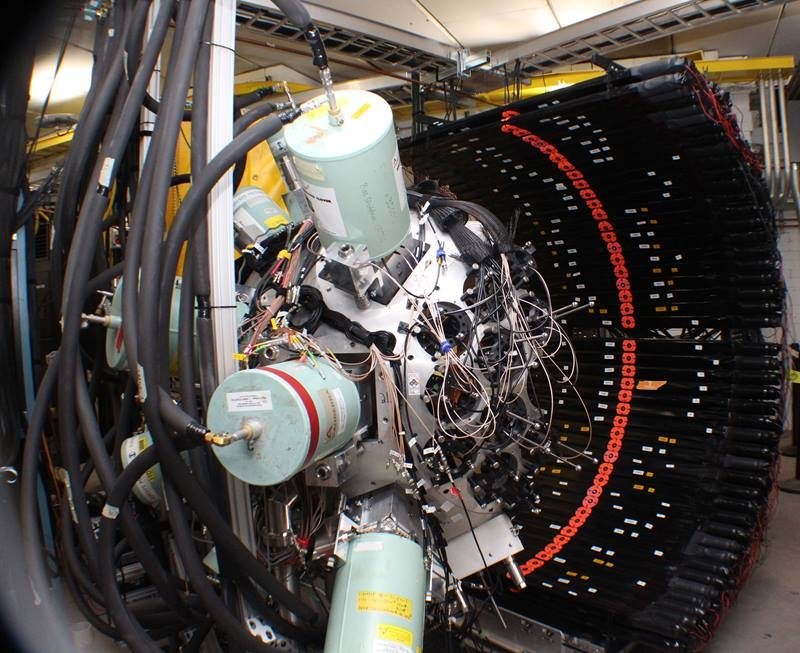
First Science Results from FRIB Published
A multi-institutional team of nuclear science researchers has published the results of the first experiment at the Facility for Rare Isotope Beams. The experiment involved colliding a beam of stable calcium-48 nuclei traveling at about 60 percent of the speed of light into a beryllium target to produce isotopes near the “drip line,” the spot where neutrons can no longer bind to a nucleus but instead drip off.
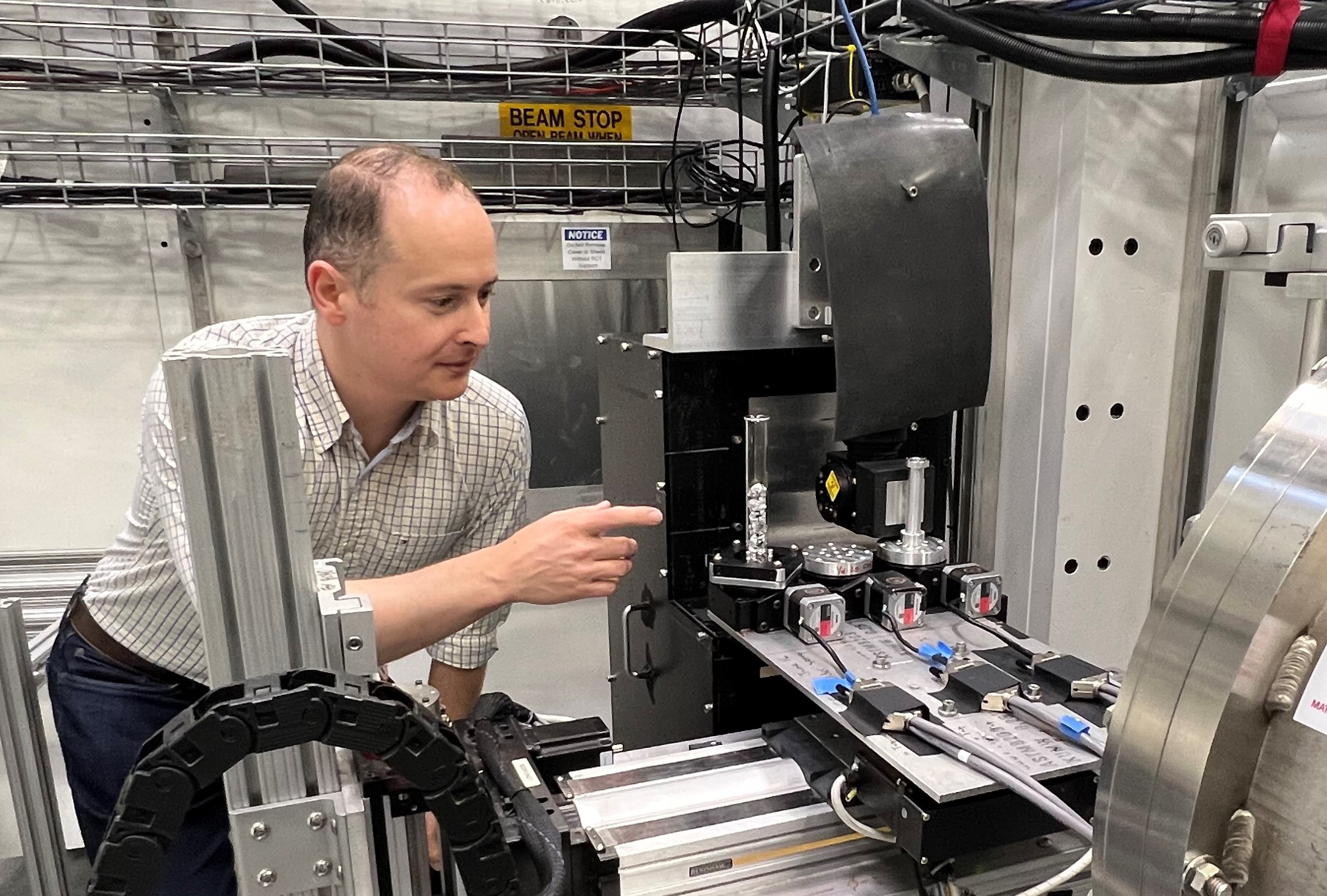
50 years after NASA’s Apollo mission, moon rocks still have secrets to reveal
NASA scientists are using neutrons at Oak Ridge National Laboratory to study moon rocks collected from the Apollo space missions. The samples are made of dust and rock fragments that combined and struck the moon’s surface possibly billions of years ago. As plans to travel to Mars progress, insights into the rocks could reveal more about the formation of the solar system and where water might be found on the moon.
Neutrons reveal how the spider lily preys on cancer, preserves healthy cells
A scientific instrument at the Department of Energy’s Oak Ridge National Laboratory could help create a noninvasive cancer treatment derived from a common tropical plant. Pancratistatin is a chemical compound found in the spider lily, a native Hawaiian flower. Unlike traditional treatments, it kills cancer cells while keeping healthy cells intact.
Add-on device makes home furnaces cleaner, safer and longer-lasting
Scientists at Oak Ridge National Laboratory have developed an affordable add-on acid gas reduction technology that removes 99.9% of acidic gases and other emissions to produce an ultraclean natural gas furnace. The AGR technology can also be added to other natural gas-driven equipment.
Particles Pick Pair Partners Differently in Small Nuclei
The protons and neutrons that build the nucleus of the atom frequently pair up in fleeting partnerships called short-range correlations. These can form between a proton and a neutron, between two protons, or between two neutrons. Scientists recently discovered that in helium-3 and tritium, which have small, light nuclei, some types of correlations are less common than they are in larger, heavier nuclei.
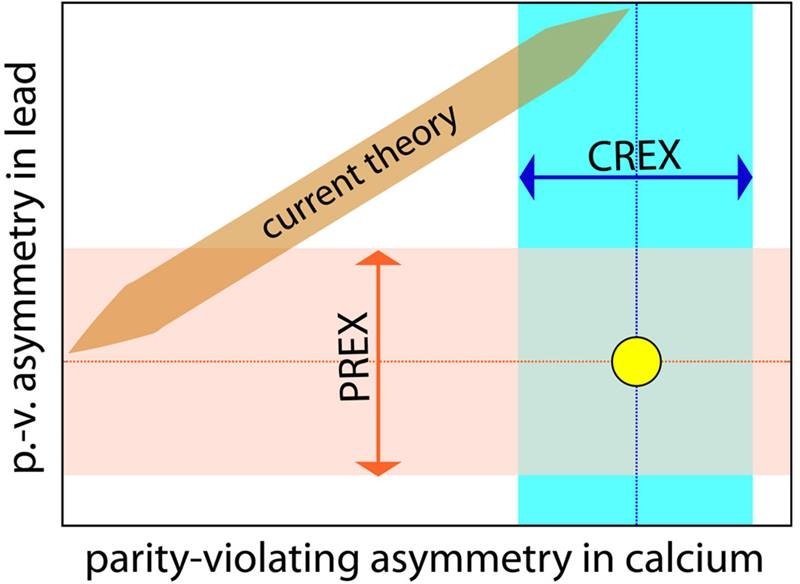
PREX, CREX, and Nuclear Models: The Plot Thickens
Recent experiments involving a tiny left-right asymmetry in electron scattering off lead-208 and calcium-48 indicate a disagreement between the experiments’ results and the predictions of global nuclear models. This result indicates a need to investigate limitations of current nuclear models or other sources of uncertainty. This has repercussions for scientists studying topics from neutron skins to nuclear symmetry energy to neutron star physics.
VULCAN forges new science for the future of 3D-printed metal
Oak Ridge National Laboratory researchers have developed a novel experimental platform called OpeN-AM to study additively manufactured metal in real time using beams of neutrons. The experimental system features a robotic arm that 3D-prints metal welds to create complex shapes and objects.
Scientists Measure Calcium Nuclei’s Thin Skin
Scientists measuring the nucleus of calcium-48 to determine how its 20 protons and 28 neutrons are distributed inside its nucleus found that the protons and neutrons aren’t simply sprinkled throughout the nucleus. Instead, they form a neutron-rich “thin skin” around a core of evenly distributed protons and neutrons. This skin is thinner than many theoretical models predicted and not consistent with expectations based on recent observations of lead’s thick skin.
For Protons and Neutrons, Things Aren’t the Same Inside Nuclei
Quarks are distributed differently in free protons and neutrons versus those inside nuclei, something called “the EMC effect.” Scientists previously thought that the EMC effect treated the up and down quarks in protons and neutrons equally. New high-precision data from the MARATHON experiment indicates that the EMC effect may exert more influence on the distribution of down quarks compared to up quarks inside nuclei.
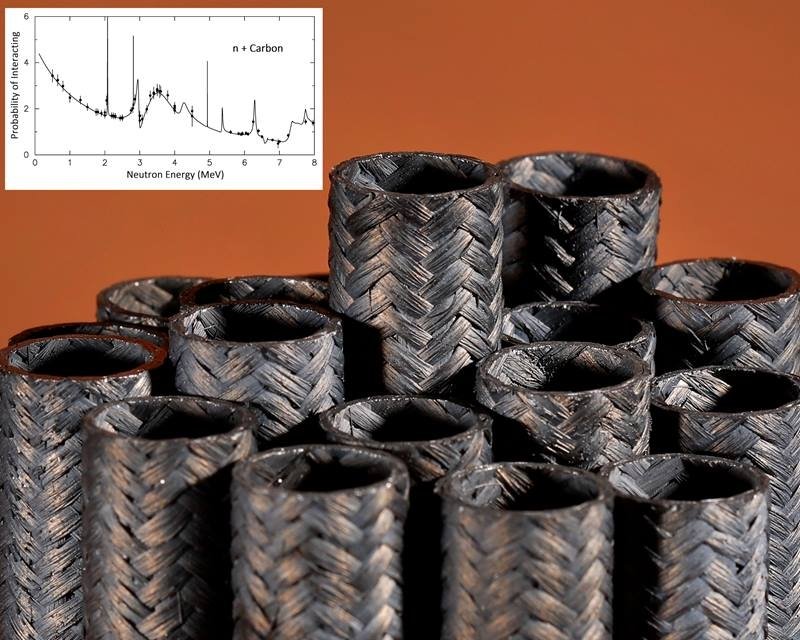
How Do Neutrons Interact with Reactor Materials?
Nuclear fission and fusion reactors use carbon and silicon in shielding, structural materials, fuel, and neutron moderators. Neutrons are the drivers of the nuclear energy production processes. This makes understanding how neutrons scatter from all reactor materials critical for nuclear plant design and other applications. In this research, scientists investigated the interaction of neutrons with silicon and carbon.
Spilling the Secrets of Quantum Entanglement
Scientists recently tested the ability of three techniques called entanglement witnesses to accurately identify pairs of entangled magnetic particles. Of the three, quantum Fisher information (QFI) performed best, routinely locating entanglement in complex materials. This work is the most thorough examination of QFI’s capabilities to date and is the first to apply QFI to massive solid materials.
Unveiling the Existence of the Elusive Tetraneutron
Nuclear physicists have experimentally confirmed the existence of the tetraneutron, a meta-stable nuclear system that can decay into four free neutrons. Researchers have predicted the tetraneutron’s existence since 2016. The new results, which agree with predictions from supercomputer simulations, will help scientists understand atomic nuclei, neutron stars, and other neutron-rich systems.
Uncovering the Atomic Mechanism Underpinning Heat Transport in Thermoelectric Materials
To better understand how thermoelectric devices convert thermal energy into electricity at the atomic scale, researchers used neutrons to study single crystals of tin sulfide and tin selenide. The results revealed a strong correlation between changes in the structure at certain temperatures and the frequency of atomic vibrations (phonons). This allowed the researchers to identify temperatures ideal for energy conversion and provided basic scientific knowledge for designing new thermoelectric materials.
The Strength of the Strong Force
Researchers have experimentally extracted the strength of the strong force, a quantity that firmly supports theories explaining how most of the mass or ordinary matter in the universe is generated. This quantity, known as the coupling of the strong force, describes how strongly two bodies interact or “couple” under this force. With Jefferson Lab data, the physicists were able to determine the strong force coupling at the largest distances yet.
Theoretical calculations predicted now-confirmed tetraneutron, an exotic state of matter
Iowa State University’s James Vary and an international team of nuclear physicists used supercomputers to theorize and predict that a four-neutron structure, a tetraneutron, could form for just billions of billionths of a second. Experiments in Japan have now confirmed the reality of a tetraneutron.
Mystery mechanism in small peptide shows big promise for fighting antibiotic-resistant bacteria
Using neutrons, researchers at Oak Ridge National Laboratory pieced together the molecular mechanics behind a peptide’s ability to deal significant damage to bacterial cells. Their findings could inform new therapeutic strategies for treating bacterial infections where antibiotics have fallen short.
Supercomputing, neutrons crack code to uranium compound’s signature vibes
Oak Ridge National Laboratory researchers used the nation’s fastest supercomputer to map the molecular vibrations of an important but little-studied uranium compound produced during the nuclear fuel cycle for results that could lead to a cleaner, safer world.
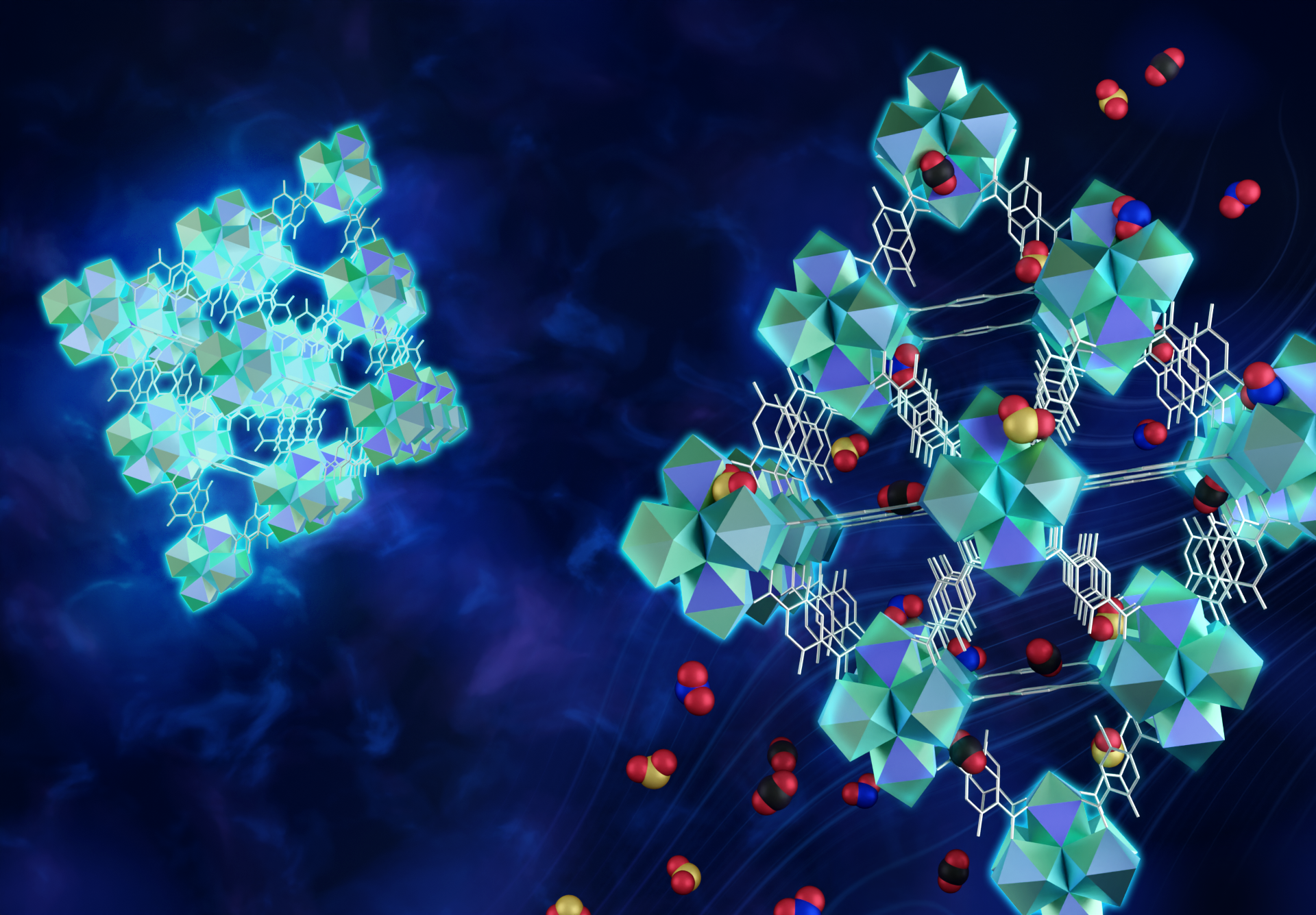
Scientists build microporous MOF traps for mitigating toxic gases
Researchers from Sandia, ORNL, and the University of Tennessee, Knoxville used neutron scattering and additional experimental techniques to study a series of materials called metal organic frameworks (MOFs) made from the entire list of rare earth elements. The researchers established a comprehensive approach to evaluating large numbers of MOFs and also made an important discovery about a defect that can be useful in building technologies to mitigate toxic gases such as nitrogen and sulfur dioxides.
Neutrons take a deep dive into water networks surrounding DNA
Using neutron experiments at Oak Ridge National Laboratory, a research team led by Vanderbilt University successfully captured the most detailed view to date of water’s hydrogen bonding patterns around DNA, opening new possibilities for studying how water impacts DNA function.
Story tips: Predicting water quality, stronger & ‘stretchier’ alloys, RAPID reinforcement and mountainous water towers
ORNL story tips: Predicting water quality, stronger & ‘stretchier’ alloys, RAPID reinforcement and mountainous water towers
How to catch a perfect wave: Scientists take a closer look inside the perfect fluid
Scientists have reported new clues to solving a cosmic conundrum: How the quark-gluon plasma – nature’s perfect fluid – evolved into the building blocks of matter during the birth of the early universe.
Buzz about thermoelectrics heats up with promising new magnesium-based materials
Researchers at Duke University and Michigan State University used neutrons at Oak Ridge National Laboratory to gain new fundamental insights into two magnesium-based materials. Investigations at the atomic scale revealed the origin and mechanism behind the materials’ ability to convert thermal energy at room temperature into electricity and provides possible new pathways for improving thermoelectric applications such as those in the Perseverance rover and myriad other devices and energy-generation technologies.

Imaging tool under development exposes concealed detonators — and their charge
Sandia National Laboratories is developing a new kind of imaging system that will enable people to safely examine sealed metal boxes when opening them could be dangerous.
DOE scientists deploy creativity, speed to disrupt COVID-19
An ORNL-led team comprising researchers from multiple DOE national laboratories is using artificial intelligence and computational screening techniques – in combination with experimental validation – to identify and design five promising drug therapy approaches to target the SARS-CoV-2 virus.
Story tips: Un-Earthly ice, buildings in the loop, batteries unbound and 3D printing for geothermal
ORNL story tips: Un-Earthly ice, buildings in the loop, batteries unbound and 3D printing for geothermal
Neutrons piece together 40-year puzzle behind iron-iodide’s mysterious magnetism
Researchers from Georgia Tech and the University of Tennessee–Knoxville uncovered hidden and unexpected quantum behavior in a simple iron-iodide material (FeI2) discovered almost a century ago. The new insights were enabled using neutron scattering experiments and theoretical physics calculations at the Department of Energy’s Oak Ridge National Laboratory. The team’s findings solves a 40-year-old puzzle about the material’s mysterious behavior and could be used as a map to unlock a treasure trove of quantum phenomena in other materials.
University of Nebraska Medical Center researchers reveal elusive inner workings of antioxidant enzyme with therapeutic potential
The enzyme manganese superoxide dismutase helps maintain human health by keeping the amount of reactive oxygen molecules in cells under control. Using neutron scattering at ORNL, researchers obtained a complete atomic portrait of the enzyme, revealing key information about its catalytic mechanism.
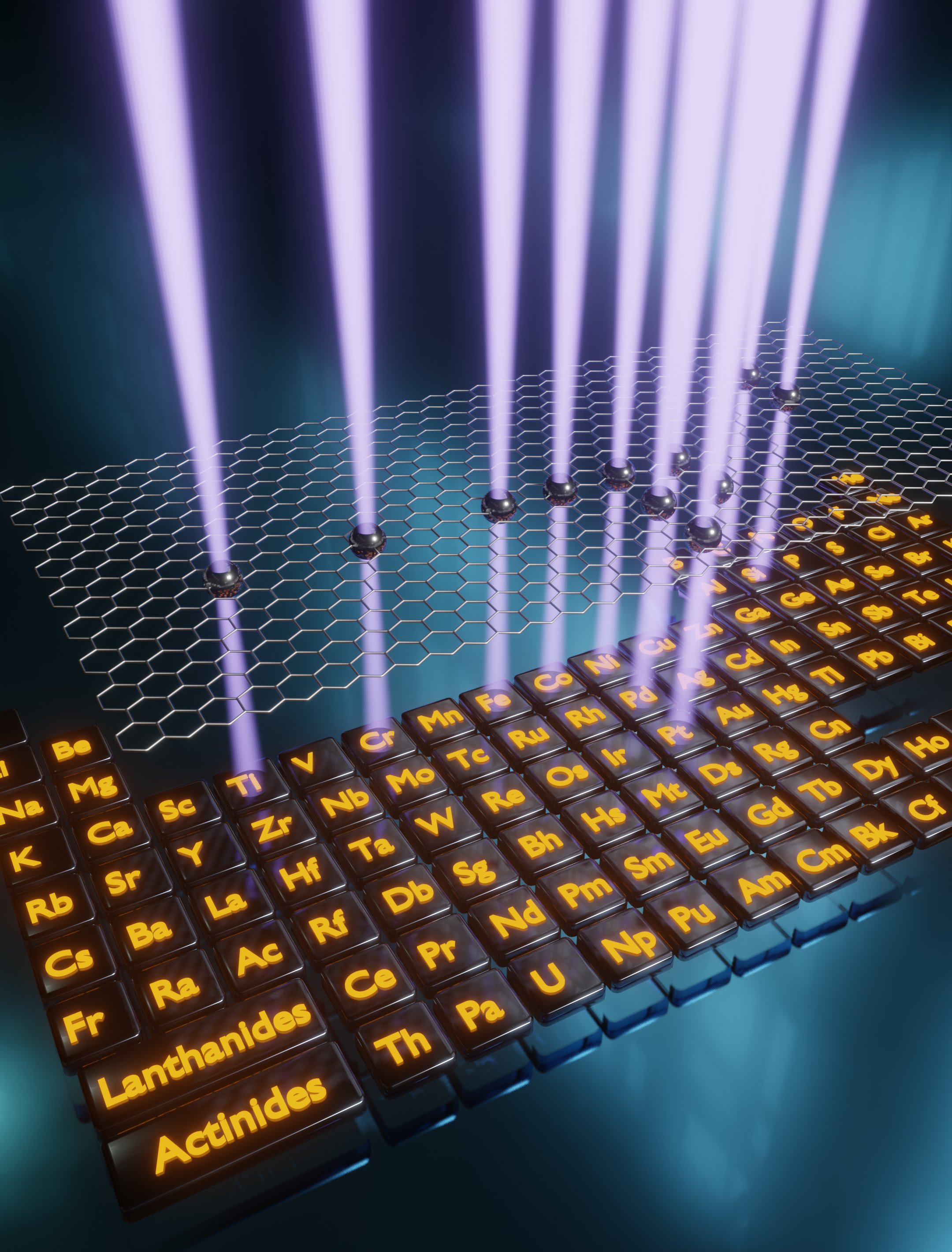
Story tips: Quantum building blocks, high-pressure diamonds, wildfire ecology, quick cooling tooling and printing on the fly
ORNL story tips: Quantum building blocks, high-pressure diamonds, wildfire ecology, quick cooling tooling and printing on the fly
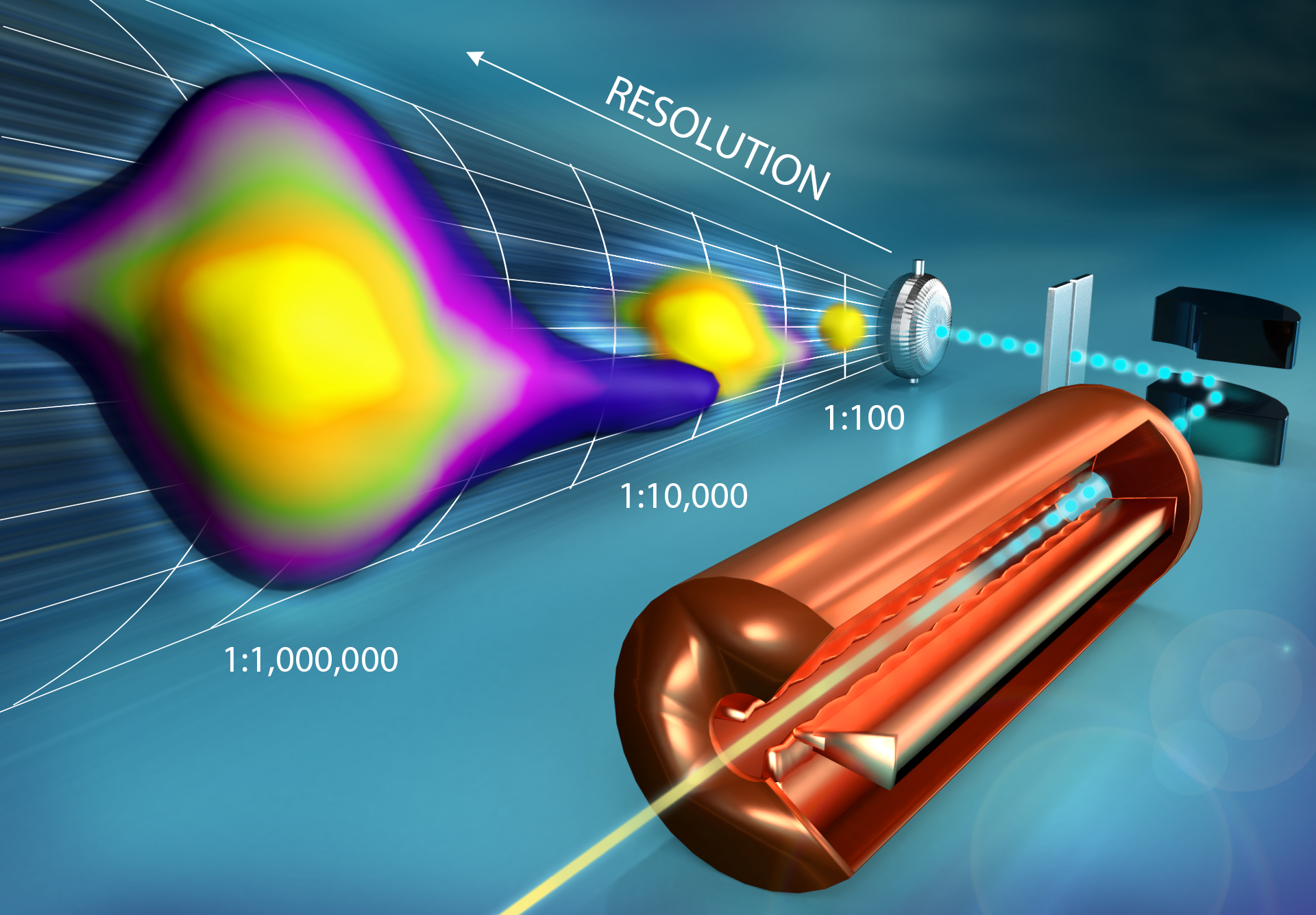
After 20 years, physicists find a way to keep track of lost accelerator particles
Physicists at Oak Ridge National Laboratory have developed a measurement technique to better understand beam loss—stray particles that travel outside the confinement fields of a particle accelerator. Mitigating beam loss is paramount to realizing more powerful accelerators at smaller scales and lower costs.
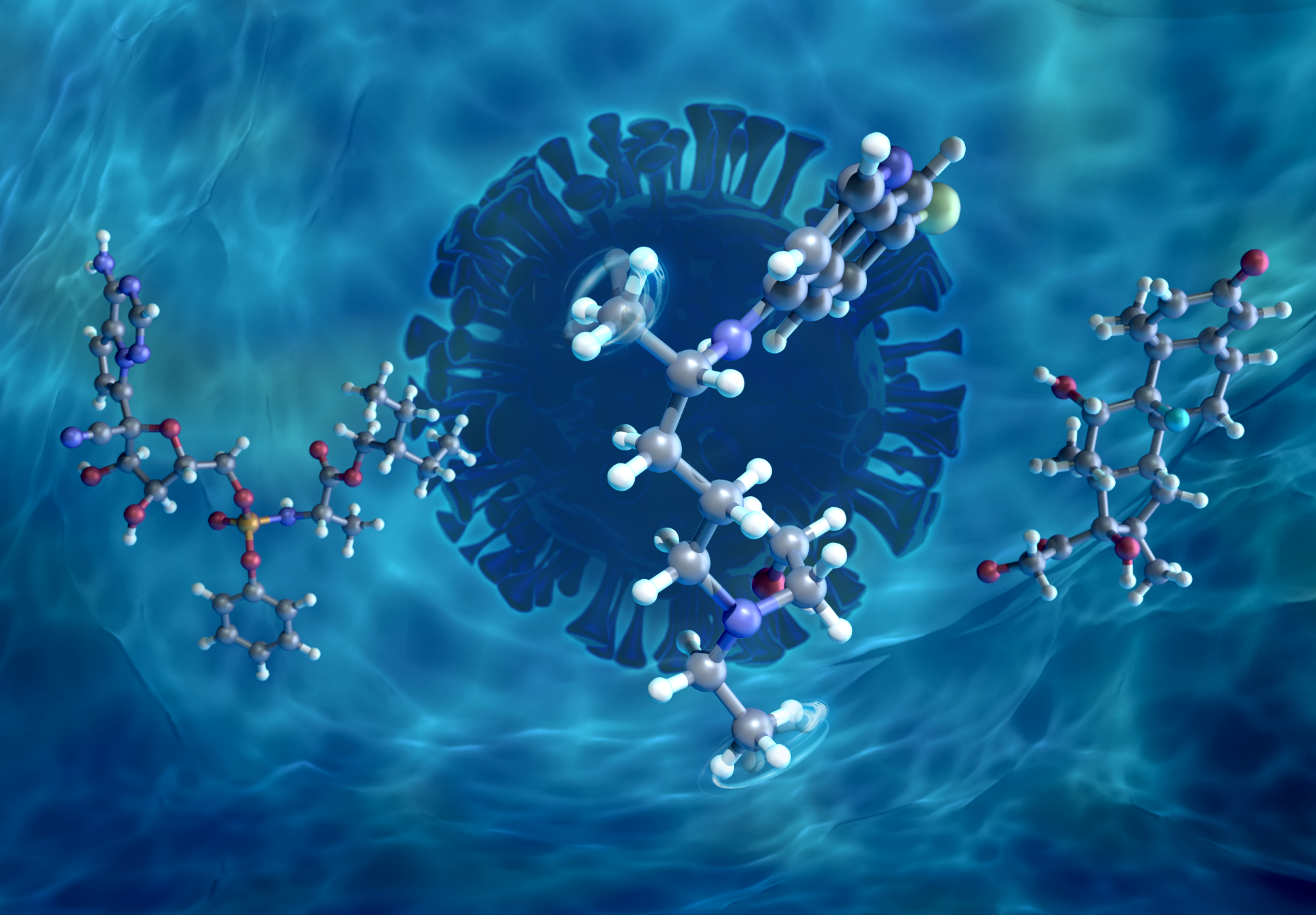
Neutrons probe molecular behavior of proposed COVID-19 drug candidates
Using neutron experiments and computer simulations, researchers from Oak Ridge National Laboratory delved into how some of the proposed COVID-19 drug candidates behave at the molecular scale when exposed to water.
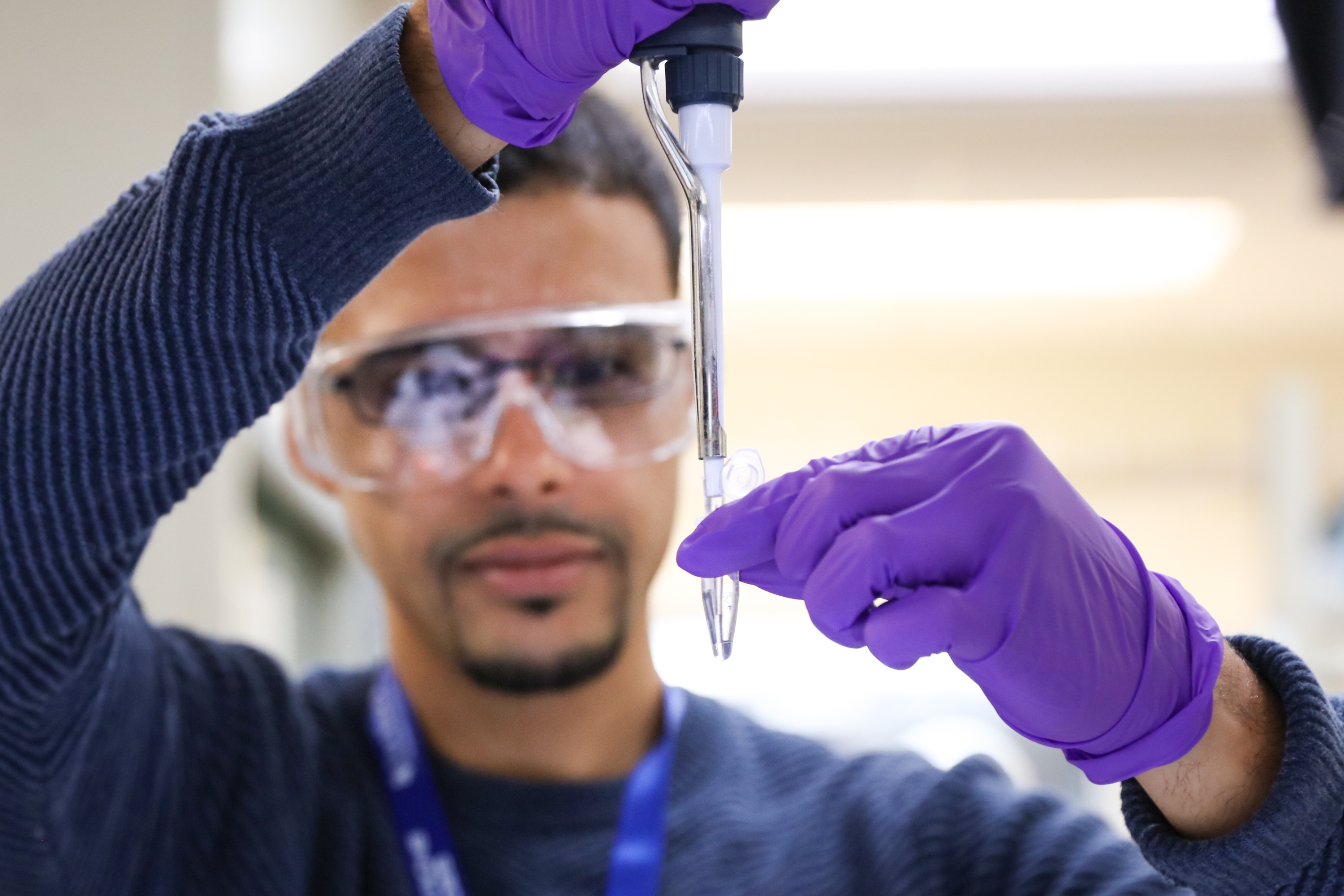
St. Jude Research uses neutrons to shine light on shutting down cancer cells
To investigate what happens inside cells when they are at risk of becoming cancerous, scientists at St. Jude Children’s Research Hospital have been using neutron scattering at Oak Ridge National Laboratory. The team is searching to better understand the altered state of the nucleolus—a membrane-less organelle inside the cell—when the cell is compromised. Novel insights into cell behavior at the atomic and molecular scales will enable better detection and treatment of cancer in its many forms.
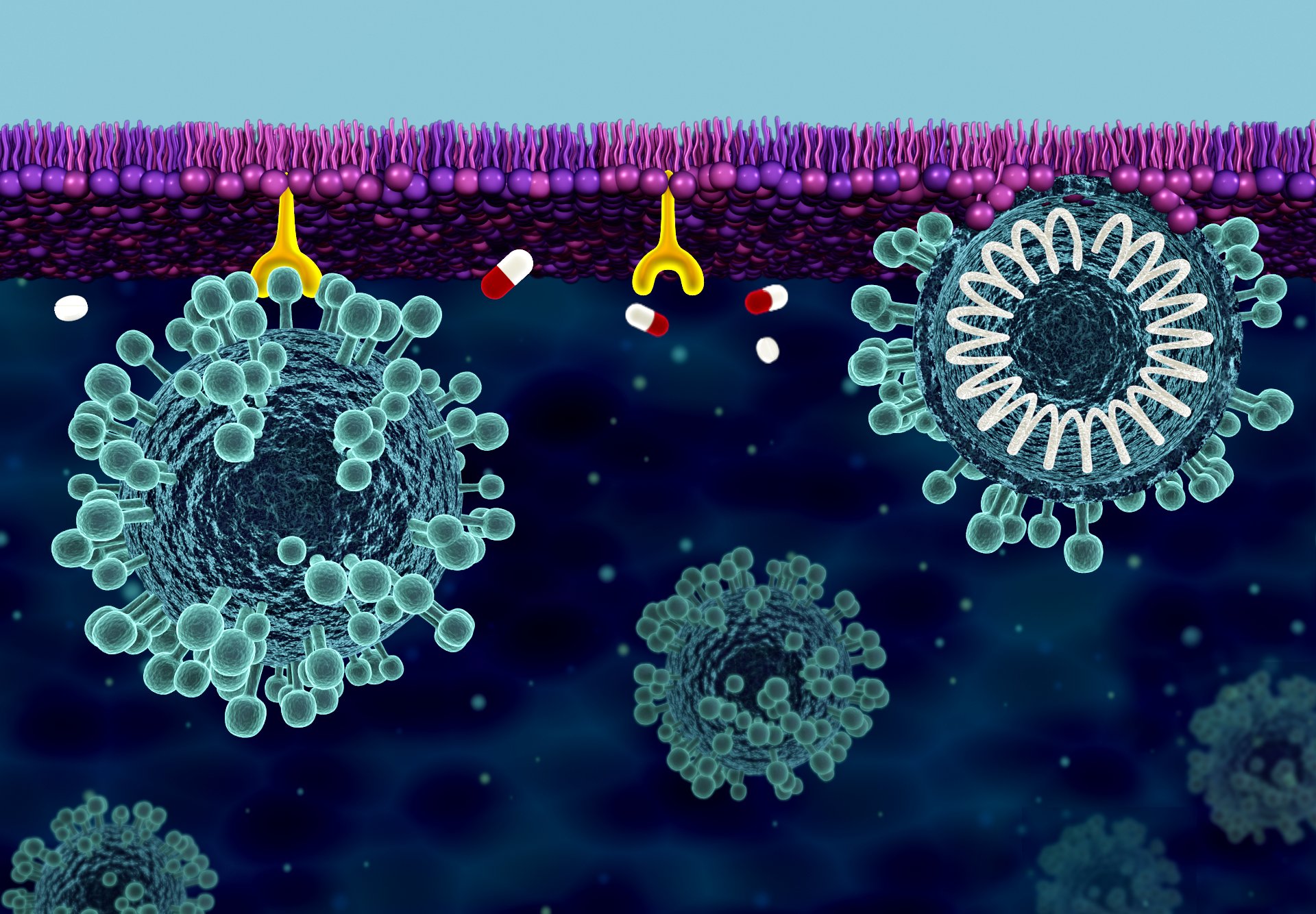
Scientists investigate solutions for building cell membrane defense against COVID-19
Researchers from Virginia Tech and Oak Ridge National Laboratory (ORNL) are using neutron scattering at ORNL’s Spallation Neutron Source to investigate how cell membranes and the COVID-19 virus impact each other and what therapeutic candidates could make cell membranes more resistant to viral entry.
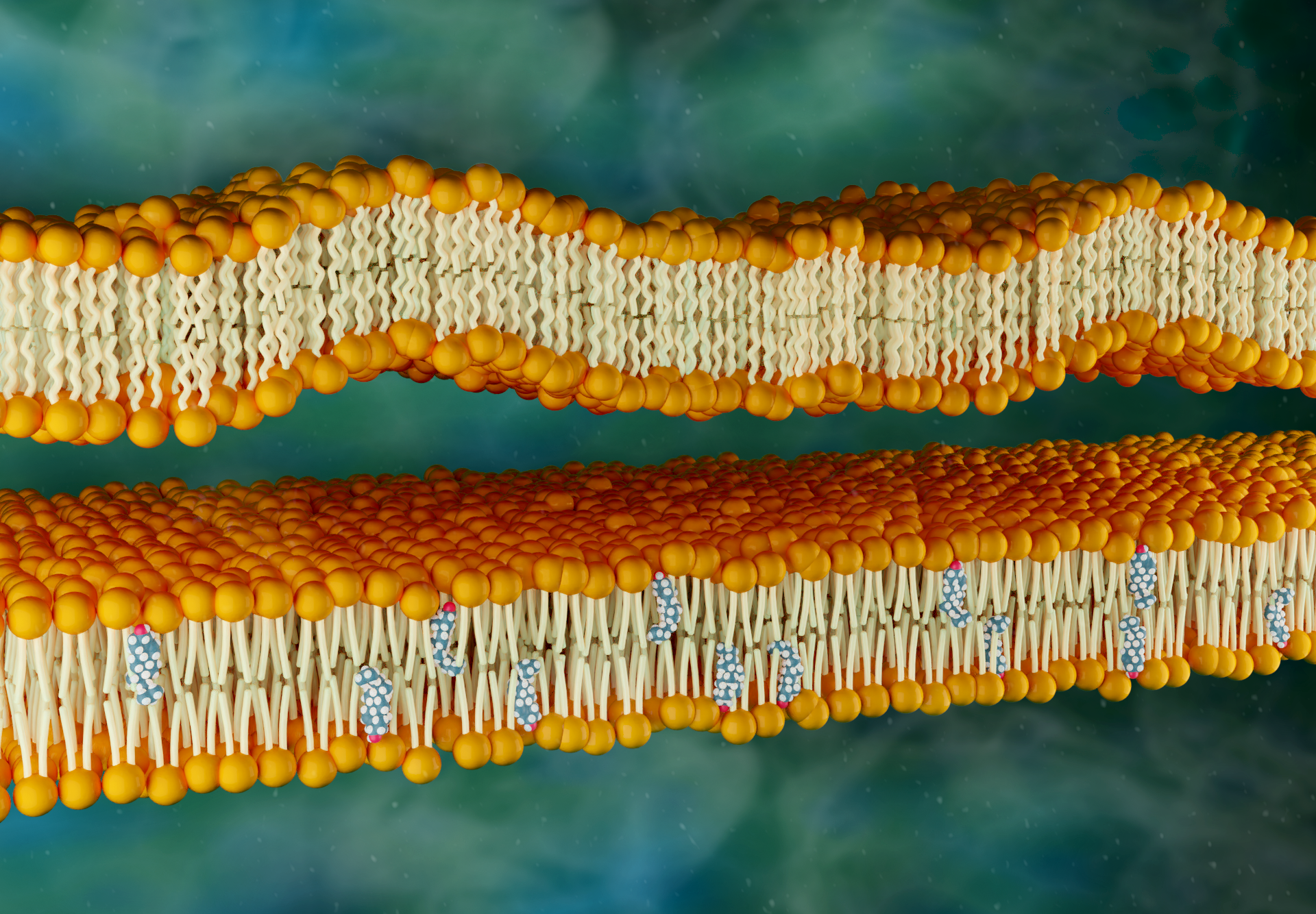
Neutrons reveal behavior of cholesterol in membranes
Neutron scattering at the Department of Energy’s Oak Ridge National Laboratory has shown that cholesterol stiffens simple lipid membranes, a finding that may help us better understand the functioning of human cells.
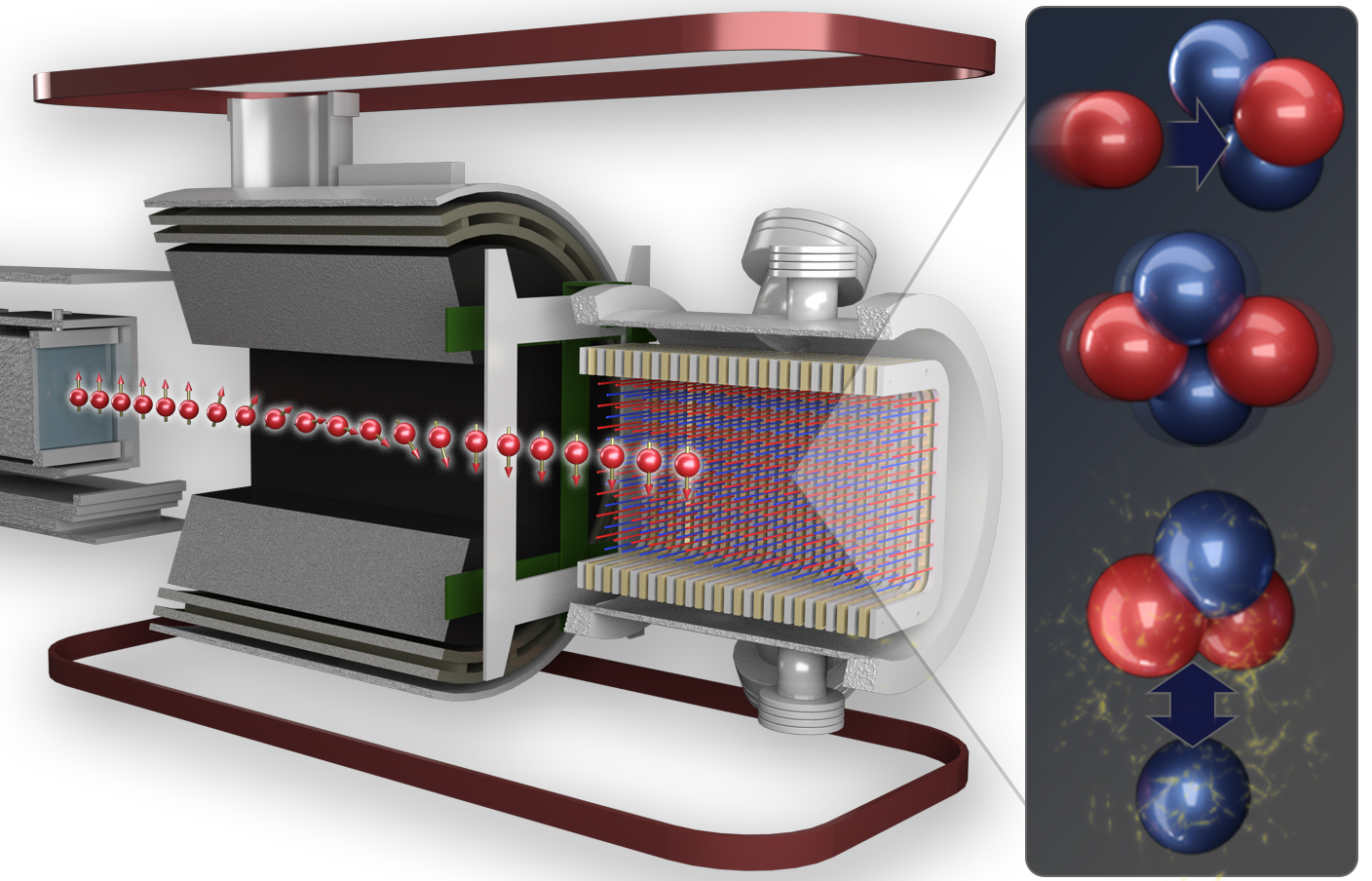
Scientists achieve higher precision weak force measurement between protons, neutrons
Through a one-of-a-kind experiment at Oak Ridge National Laboratory, nuclear physicists have precisely measured the weak interaction between protons and neutrons. The result quantifies the weak force theory as predicted by the Standard Model of Particle Physics.
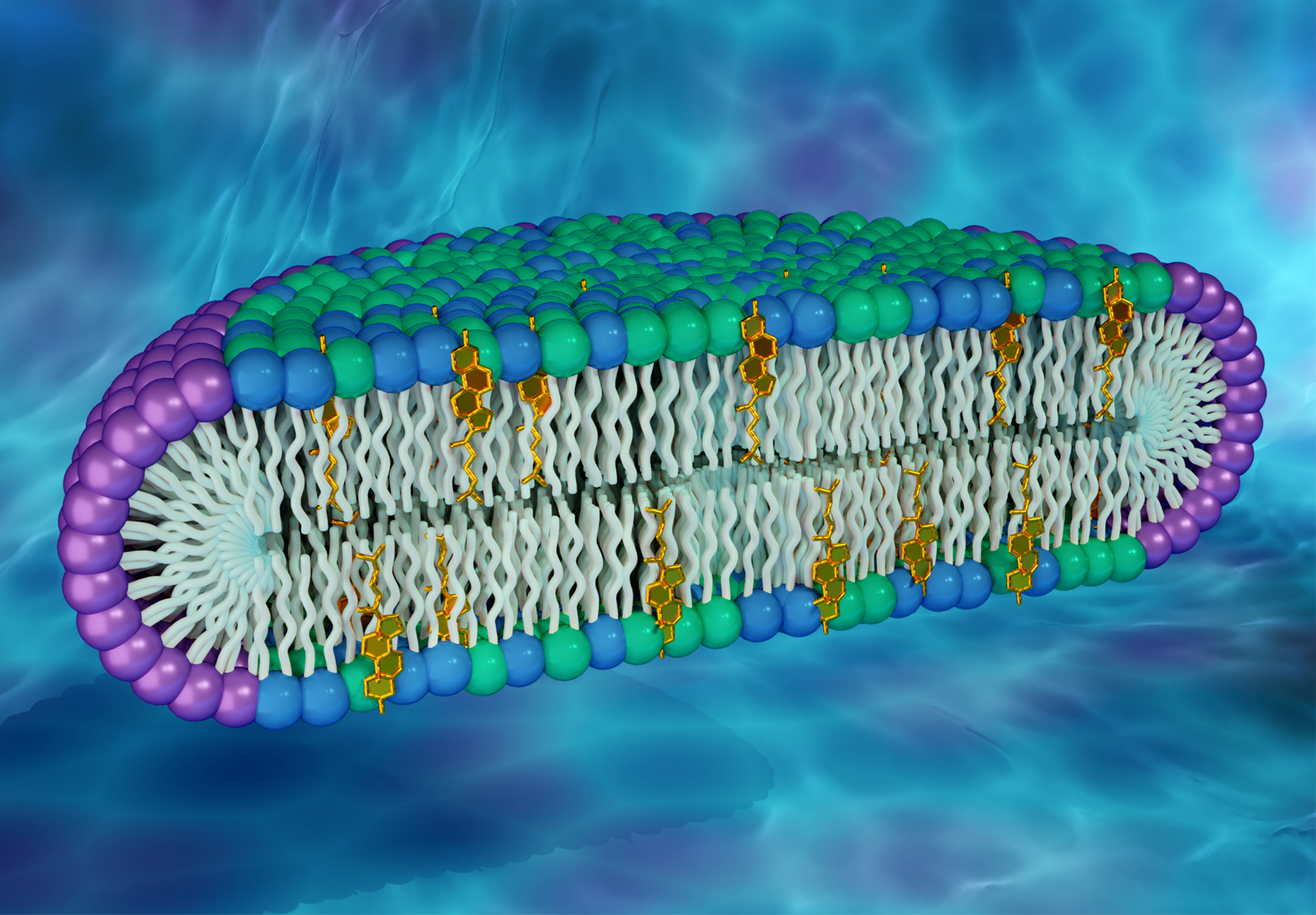
Novel cell membrane model could be key to uncovering new protein properties
Researchers have recently shed light on how cell membrane proteins could be influenced by the lipids around them. By developing a novel type of membrane model, they were able to show that the shape and behavior of a protein can be altered by exposure to different lipid compositions. The research team confirmed the artificial membrane’s structure using x-ray and neutron scattering at the Department of Energy’s (DOE’s) Brookhaven (BNL) and Oak Ridge National Laboratories (ORNL).
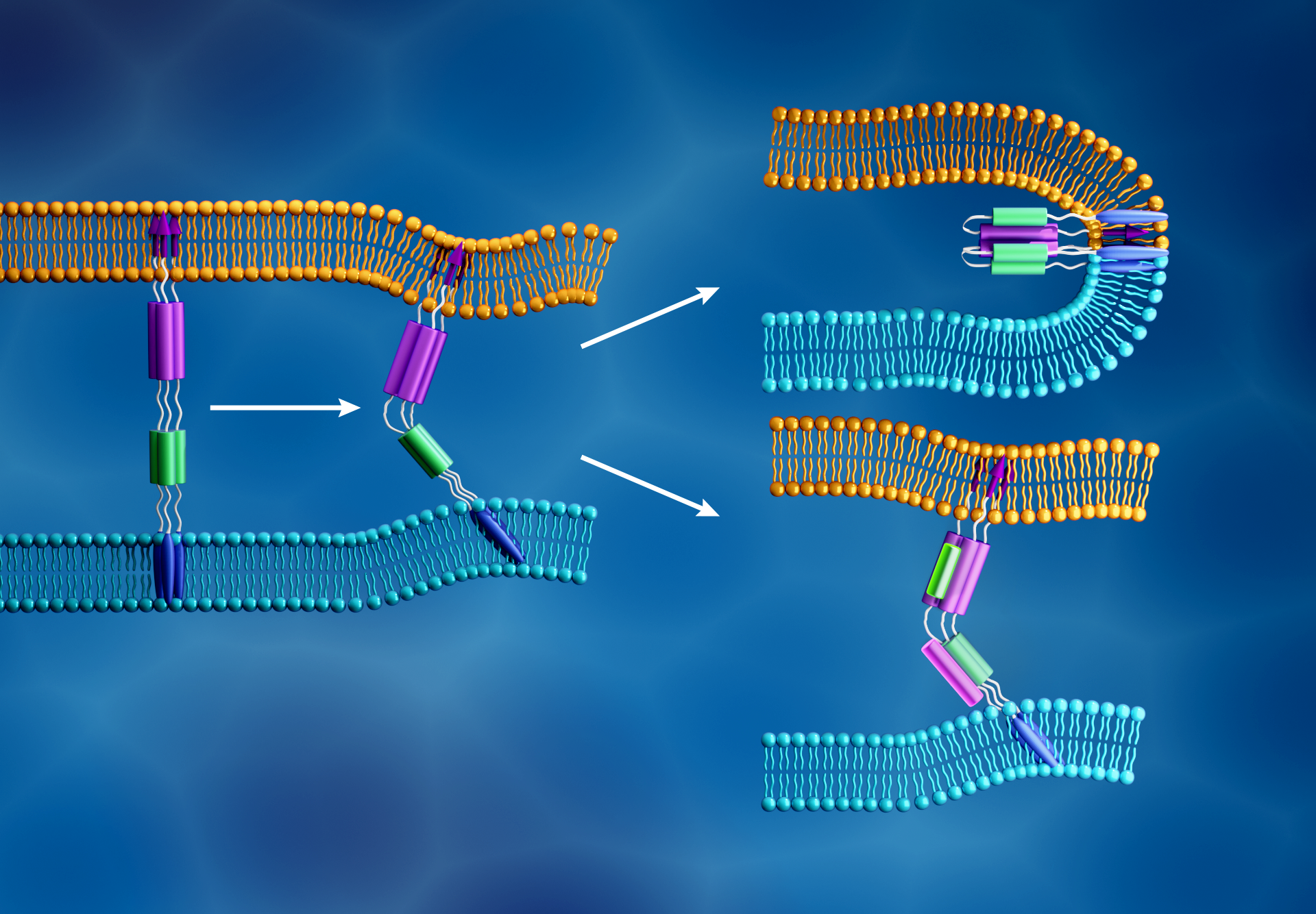
Neutrons probe biological materials for insights into COVID-19 virus infection
Researchers at ORNL are using neutron scattering at the Spallation Neutron Source to better understand how spike proteins help the COVID-19 virus infect human cells and what drugs could be effective in stopping them.

Studying Small to Learn Big
Dien Nguyen (Zee-en Wen) studies some of the smallest units of matter on Earth to learn more about massive objects in space. Now, she’ll be conducting her research as the Nathan Isgur Postdoctoral Fellow in Nuclear Experiment at the Department of Energy’s Thomas Jefferson National Accelerator Facility.
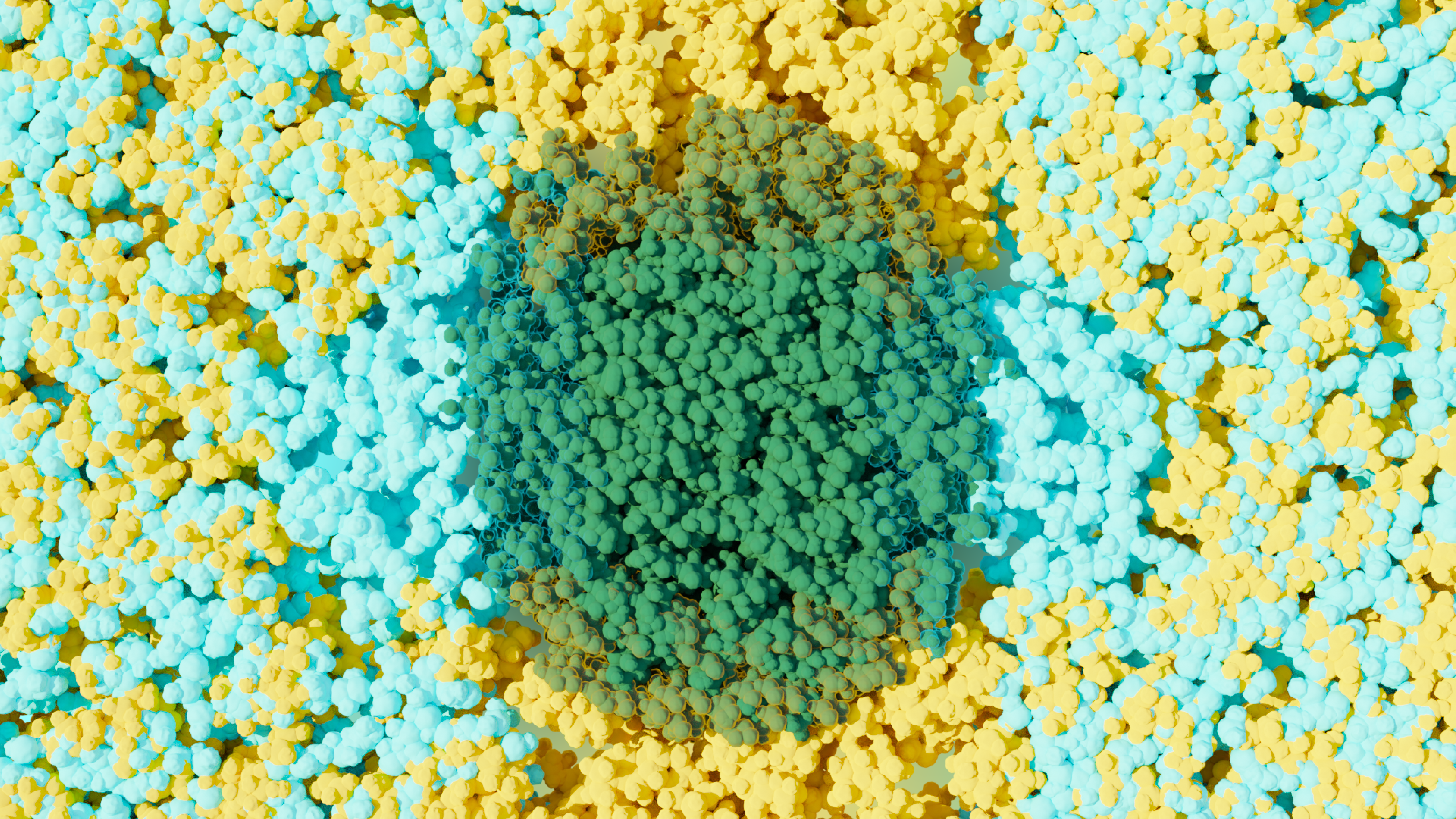
Love-hate relationship of solvent and water leads to better biomass breakup
Scientists at the Department of Energy’s Oak Ridge National Laboratory used neutron scattering and supercomputing to better understand how an organic solvent and water work together to break down plant biomass, creating a pathway to significantly improve the production of renewable biofuels and bioproducts.
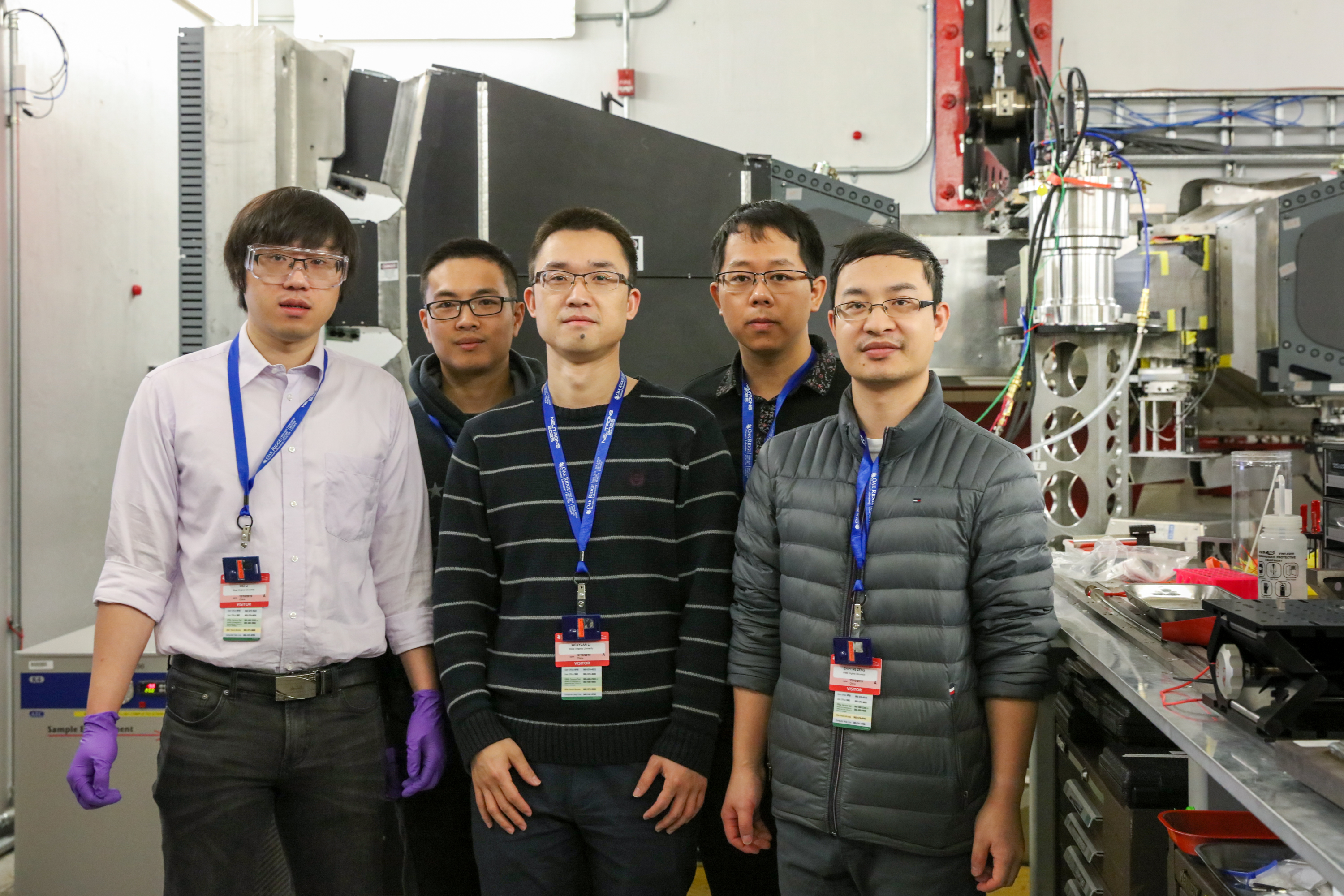
West Virginia researchers use neutrons to study materials for power plant improvements
Researchers from West Virginia University are using neutron scattering at Oak Ridge National Laboratory to study novel materials called high entropy oxides, or HEOs. Their goal is to collect insights into how the atoms in the HEOs bind together and whether the materials can be used to develop useful applications to improve power plant operations.

Analyzing Matter’s Building Blocks
Nobuo Sato is working to put the know in femto. He’s just been awarded a five-year, multimillion dollar research grant by the Department of Energy to develop a “FemtoAnalyzer” that will help nuclear physicists image the three-dimensional internal structure of protons and neutrons. Now, Sato is among 76 scientists nationwide who have been awarded a grant through the DOE Office of Science’s Early Career Research Program to pursue their research.
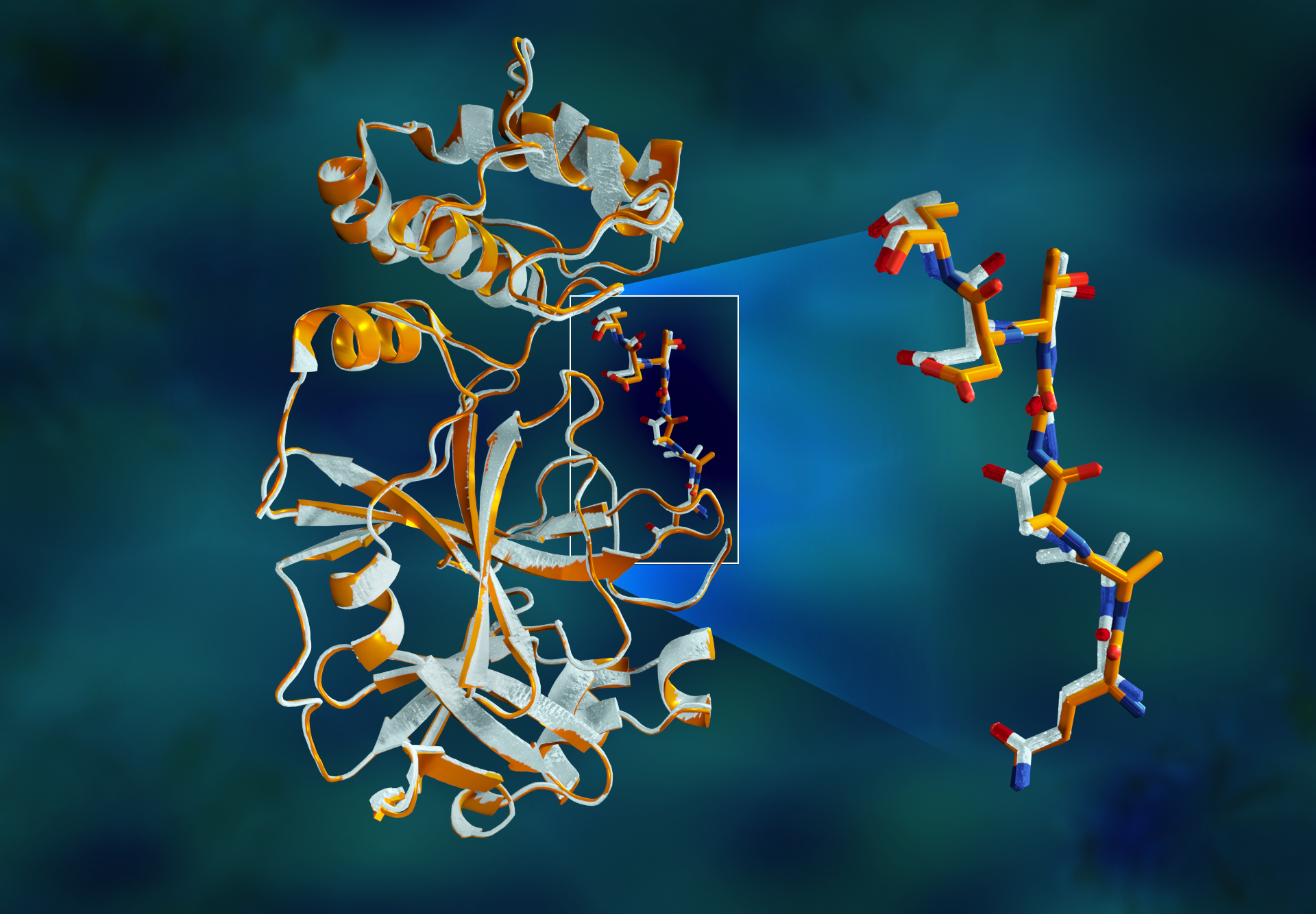
X-rays size up protein structure at the ‘heart’ of COVID-19 virus
Researchers have performed the first room temperature X-ray measurements on the SARS-CoV-2 main protease—the enzyme that enables the virus to reproduce. It marks an important first step in the ultimate goal of building a comprehensive 3D model of the enzymatic protein that will be used to advance supercomputing simulations aimed at finding drug inhibitors to block the virus’s replication mechanism and help end the COVID-19 pandemic.
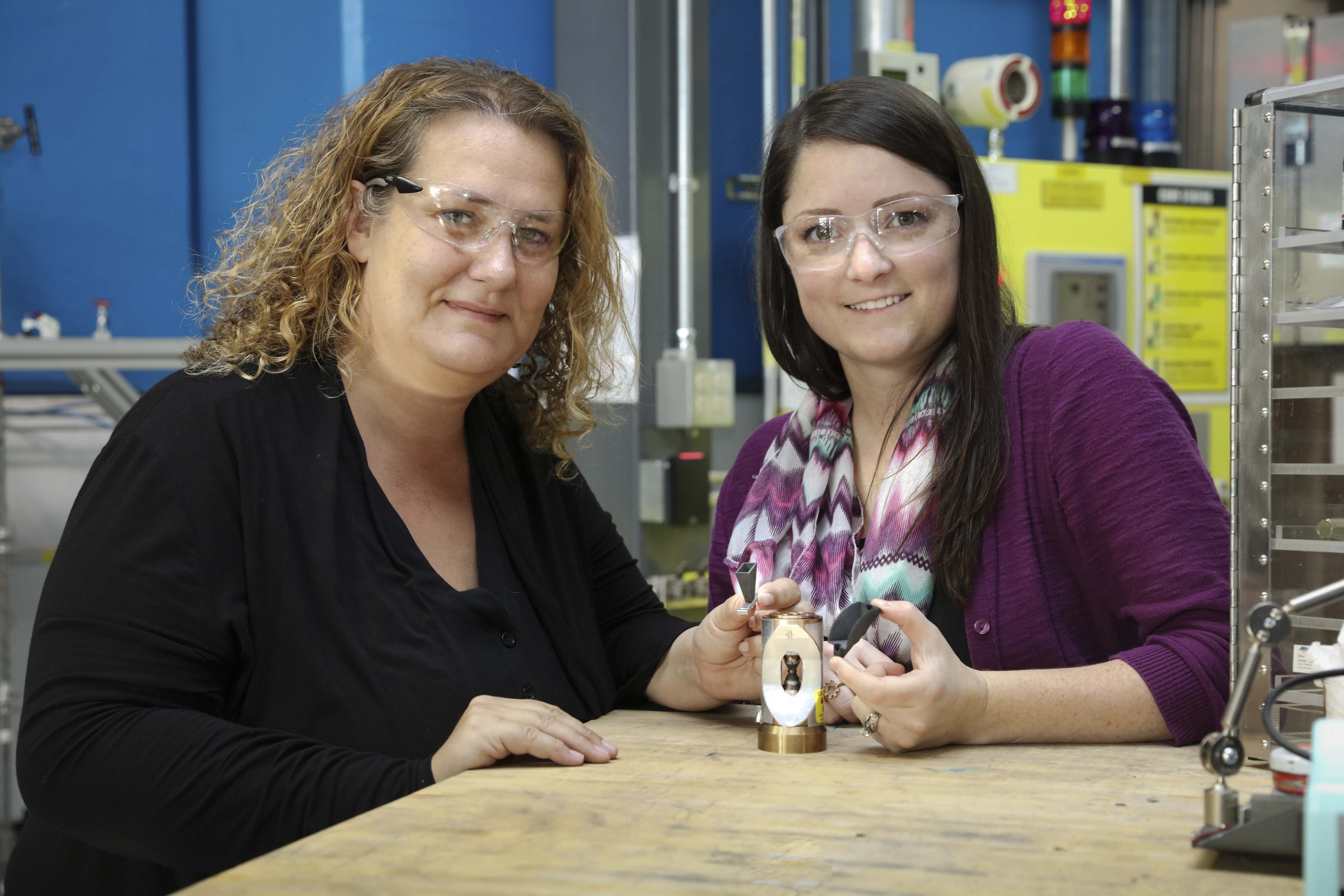
ExOne licenses ORNL method to 3D print components for refined neutron scattering
The Department of Energy’s Oak Ridge National Laboratory has licensed a novel method to 3D print components used in neutron instruments for scientific research to the ExOne Company, a leading maker of binder jet 3D printing technology.